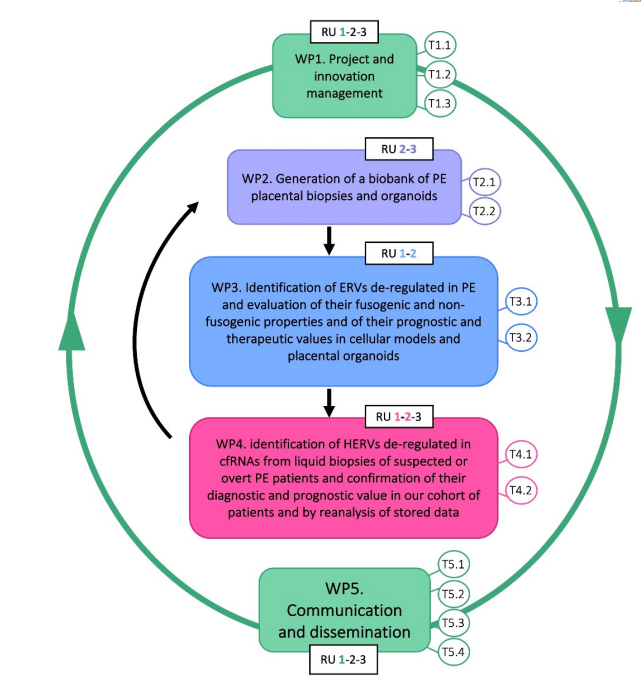PRIN2022 PNRR - Identification of HERVs with prognostic and diagnostic value for preeclampsia

Titolo progetto: PRIN2022 PNRR - Identification of HERVs with prognostic and diagnostic value for preeclampsia
Programma di finanziamento: PRIN 2022
Responsabile scientifico: dott. Eros Di Giorgio
Ruolo del DAME: partner
Descrizione generale:
Preeclampsia (PE) is a major cause of maternal and perinatal morbidity worldwide, potentially leading to complications ranging from maternal stroke to fetal growth restriction, prematurity, and stillbirth. The extensive research on this topic over the last decades has shown that PE is a syndrome with considerable heterogeneity in its phenotypes. That’s why global therapeutic approaches do not work and experts now advocate for therapies tailored for the individual phenotypes. Utero-placental ischemia is one of the principal mechanisms involved in the pathogenesis of this syndrome. However, what determines such defective placentation is currently not completely understood. Therefore, the main objective of this project is to get insight into the etiology of uteroplacental ischemia in PE. Two key events control hemochorial placentation: the fusion of cytotrophoblasts (CTBs) into syncytiotrophoblasts (STBs) and the infiltration of the decidua and maternal endometrium and myometrium by extravillous trophoblasts (EVTs). Interestingly, syncytization is controlled by the de-repression of syncytin-1 (ERV-W1) and syncytin-2 (ERV-FRDE1), two envelope genes of retroviral origin that have been coopted for placentation, and are repressed in PE placentas. As similar epigenetic mechanisms control the expression of different classes of Human Endogenous Retroviruses (HERVs), proviral sequences acquired by the primate germ line along evolution, which accounts for the 8% of our DNA. Particularly, we hypothesize that the dysregulation of a panel of HERVs characterizes PE. Therefore, here we aim to identify this panel of HERVs with prognostic and diagnostic value for PE. To achieve this goal we plan to: a) re-analyze POP dataset (Rosie Hospital, Cambridge) of normal and PE placentas and identify the most de-regulated ERV hits in pathological samples; b) re-analyze Stanford’s Lucile Packard Children’s Hospital (Stanford) dataset of circulating cell-free RNAs (cfRNAs) obtained from the blood of normotensive and preeclamptic mothers to fish out HERV transcripts de-regulated in pathological samples and which can form the basis for performing a liquid biopsy diagnostic test; c) confirm the hits identified with putative prognostic and diagnostic value in an Italian patient court recruited ad hoc for this grant by means of RNA-seq and cfRNAs analysis; d) establish human placental organoids from healthy and PE placentas to evaluate in lossof-function and gain-of-function experiments the fusogenic and non-fusogenic properties of the selected ERV candidates; e) prepare a PE diagnostic and prognostic test based on the evaluation by means of qPCR of a wellestablished panel of ERV transcripts. Hence, this project aims to investigate the etiopathogenesis of PE and to find new methods for diagnosis and prediction of PE, in order to design and test phenotype-specific interventions.
Partner del progetto:
- Università degli Studi di Cagliari
- Università degli Studi di Udine
- Azienda Sanitaria Universitaria Friuli Centrale (ASUFC)
Date inizio e fine progetto: 29.11.2023 – 28.11.2025
Budget totale del progetto: 111.000,00€
Sito web: prin.mur.gov.it

Finanziato dall’Unione europea – Next Generation EU